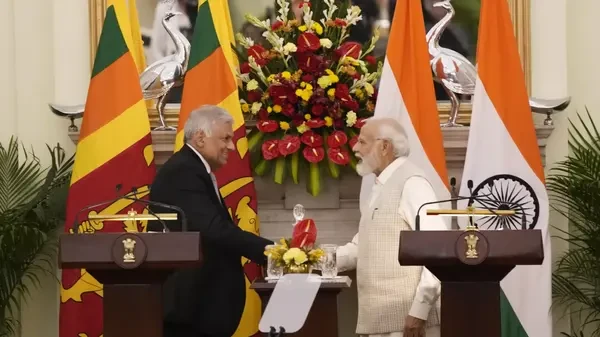According to a Daily Mirror report, the strategic importance of Sri Lanka's graphite industry reveals the fierce competition for investments among global majors including India, China, the US and France, as well as Canadian and Australian companies already present in the industry.
Sri Lanka is known for its large reserves of high-quality vein graphite, which plays a vital role in "India's battery manufacturing sector," Group Captain Ajay Lele, Deputy Director, Manohar Parrikar Institute of Defence Research and Analyses, told Sputnik India.
Meanwhile, Lele pointed out that India's mineral strategy in Sri Lanka
is heavily supported by territorial advantage.
"Sri Lanka is India's immediate neighbour and one of the countries with which we enjoy the strongest bilateral relations. This proximity not only fosters geopolitical cooperation but also simplifies the logistical process due to the shorter physical distance between the two countries compared to Western countries. This geographical advantage is proving to be crucial, especially with regards to supply chains and related ventures," he asserted.
Highlighting India's strategic interests, Lele said the semiconductor industry is emerging as a major player, especially in the areas of electric vehicles (EVs) and green technology. He noted that these industries are heavily dependent on various minerals, which allows India to contribute significantly to the global challenge of climate change, directly or indirectly.
"India has mining agreements with the Democratic Republic of Congo for cobalt and copper, while resources like niobium and graphite in Tanzania and graphite and titanium in South Africa are essential for various industries.
"However, security challenges are a major hurdle in these regions," he said. Rupee trade between India and Sri Lanka However, Lele added that India would be cautious not to be "overly dependent on any single source" to effectively mitigate such risks. As a result, "diversification, for example through possible cooperation with Sri Lanka, is central to India's strategic approach" to address the dynamic needs of the supply chain and related considerations.
The captain explained that Sri Lanka's exchange rate nuances with Western countries are important in trade negotiations.
Furthermore, he recommended exploring the possibility that "bilateral trade in rupees between India and Sri Lanka opens up attractive possibilities."
"Such an agreement would position India as a significant player in resource extraction relative to Western countries. This shift to rupee-based trade offers a promising avenue to foster mutually beneficial trade relations between the two countries," he concluded.
Meanwhile, Indian media reported that Director General of the Department of Geology and Mining Survey Professor Ranjith Premasiri confirmed that Chinese and Indian companies are interested in investing in the graphite sector. He stressed the importance of assessing which companies are maximizing the value of graphite in advanced industrial applications, especially given that there are more than 3,000 abandoned mines across the country.








